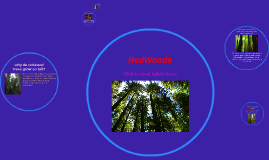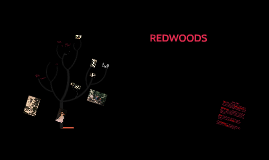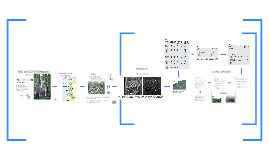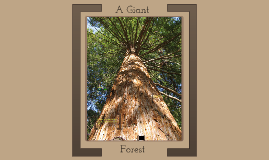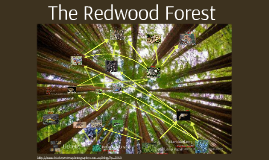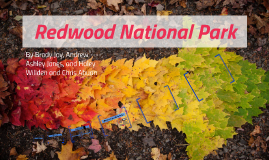Redwoods Presentation
Transcript: The Redwood Forest https://www.britannica.com/animal/cricket-insect https://www.fs.fed.us/visit/know-before-you-go/mountain-lions Steller's Jay Gray Fox http://www.sonic.net/~shwand/grasshoppers/grasshoppers.htm Sambucus cerulea Eptesicus fuscus Banana Slug Tamiasciurus douglasii Wood Boring Beetle Lace lichen (Ramalina menziesii) http://wildlifeofct.com/common%20raccoon.html http://naturemappingfoundation.org/natmap/facts/douglas_squirrel_712.html Puma concolor Northern Spotted Owl Ariolimax https://www.amazon.com/Blue-Elderberry-Seeds-Sambucus-caerulea/dp/B06ZZ58T33 Northern Flying Squirel Methuselah’s Beard (Usnea longissima) https://nature.mdc.mo.gov/discover-nature/field-guide/gray-fox https://www.rentokil.co.za/blog/woodworms-the-wood-boring-beetles/ https://fineartamerica.com/featured/bobcat-in-forest-teri-virbickis.html Redwood Sorrel Big Brow Bat Pin lichen (Calicium abietinum) California Hazel https://sempervirens.org/discover-redwoods/redwoods-wildlife/banana-slugs/ Bubo virginianus http://fieldguide.mt.gov/speciesDetail.aspx?elcode=AMACC04010 Works Cited "Blue Elderberry Sambucus nigra ssp. caerulea." Calscape, California Native Plant Society, calscape.org/Sambucus-nigra-ssp.-caerulea-(Blue-Elderberry). Accessed 26 Oct. 2019. "Coniferous Forests." Conserve Energy Future, www.conserve-energy-future.com/coniferous-forest.php. "Ecology of the Coast Redwoods." Ecology Info, www.ecology.info/redwood.htm. Accessed 28 Oct. 2019. Holmes, Russ. "Redwood Sorrel." U.S. Forest Service, United States Department of Agriculture, www.fs.fed.us/wildflowers/plant-of-the-week/oxalis_oregana.shtml. Accessed 26 Oct. 2019. Jensen, Ed. "California Hazel." Common Trees of the Pacific Northwest, Oregon State University, oregonstate.edu/trees/broadleaf_genera/species/cali_hazel_sp.htm. Accessed 26 Oct. 2019. John, Sara. "Abiotic Factors in the Redwood Forest Ecosystem." Hunker, www.hunker.com/13428999/abiotic-factors-in-the-redwood-forest-ecosystem. Accessed 26 Oct. 2019. K, Thomas. "Ariolimax columbianus." Animal Diversity Web, U of Michigan Museum of Zoology, animaldiversity.org/accounts/Ariolimax_columbianus/. Accessed 26 Oct. 2019. "Northern Flying Squirrel." Nature Works, PBS, nhpbs.org/natureworks/northernflyingsquirrel.htm. Accessed 26 Oct. 2019. Nuwer, Rachel. "In Towering Redwoods, an Abundance of Tiny, Unseen Life." New York Times [New York], 19 Apr. 2016, sec. D, p. 3. The New York Times, www.nytimes.com/2016/04/19/science/in-towering-redwoods-an-abundance-of-tiny-unseen-life.html. Accessed 26 Oct. 2019. "Redwood Bark Beet." Natural Resources Canada, Canada Government, tidcf.nrcan.gc.ca/en/insects/factsheet/1000139. Accessed 26 Oct. 2019. "Redwoods and Climate." Sempervirons, sempervirens.org/discover-redwoods/redwoods-climate/. Accessed 26 Oct. 2019. Corylus cornuta https://www.laspilitas.com/nature-of-california/plants/780--corylus-cornuta-californica Procyon lotor Lynx rufus Crickets https://www.savetheredwoods.org/blog/wonders/meet-the-treetop-lichen/ Buprestidae Urocyon cinereoargenteus Strix occidentalis caurina Gryllidae Glaucomys sabrinus Tree Hair lichen (Bryoria fremontii) Great Horned Owl Acridomorpha https://leavesofplants.blogspot.com/2012/04/redwood-sorrel.html http://www.birdseyeviewphotography.com.au/blog/?p=2060 Bobcat Racoon Mountain Lion Blue Elderberry https://www.flatheadaudubon.org/bird-of-the-month/great-horned-owl/ https://www.allaboutbirds.org/guide/Stellers_Jay/id Red Beard lichen (Usnea rubicunda) https://kaniksulandtrust.org/2019/09/01/flying-squirrel/ Grasshopper Lichens https://www.pacificforest.org/species/northern-spotted-owl/ Oxalis oregana Douglas Squirel Cyanocitta stelleri






